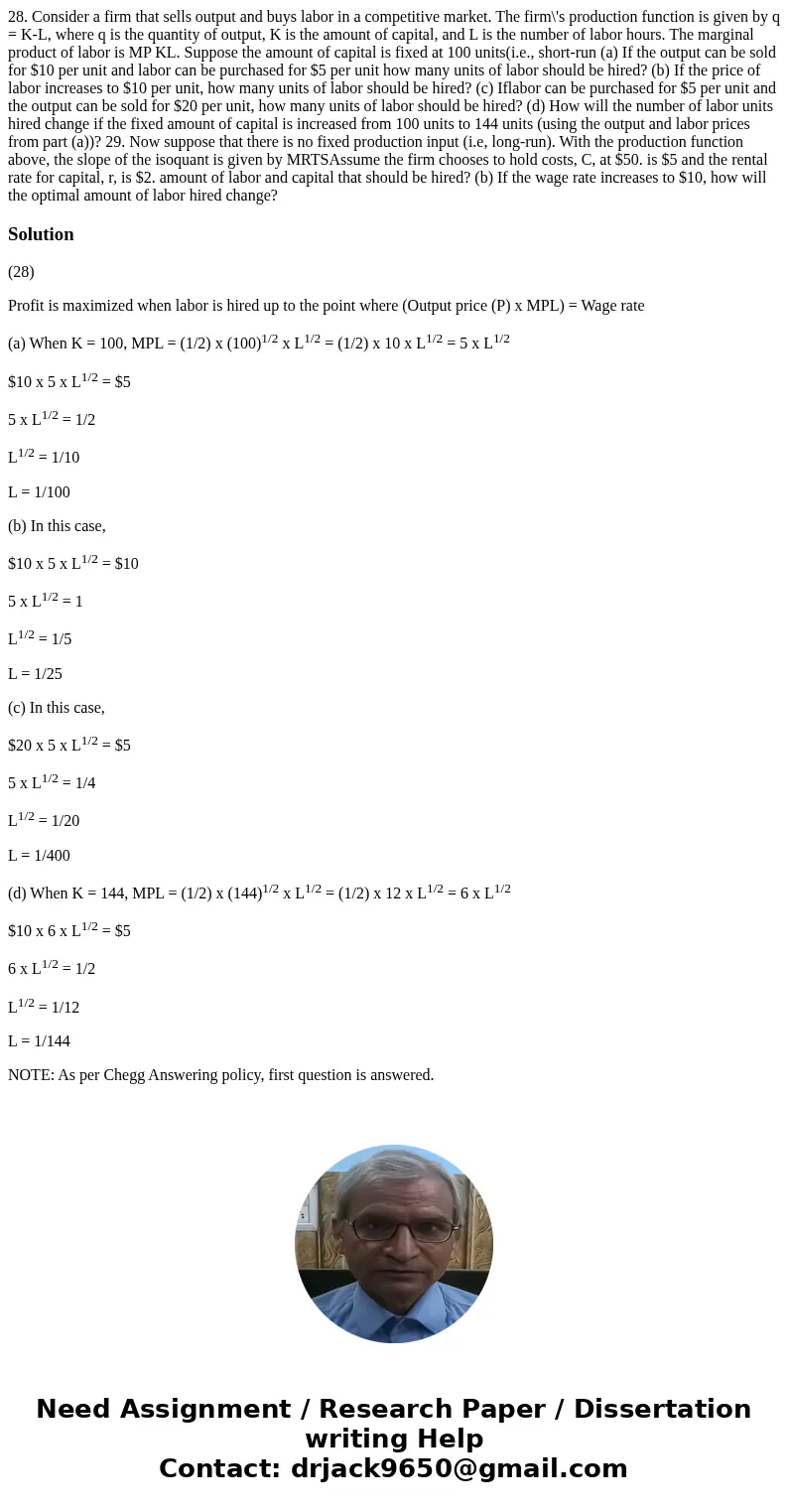28 Consider a firm that sells output and buys labor in a com
28. Consider a firm that sells output and buys labor in a competitive market. The firm\'s production function is given by q = K-L, where q is the quantity of output, K is the amount of capital, and L is the number of labor hours. The marginal product of labor is MP KL. Suppose the amount of capital is fixed at 100 units(i.e., short-run (a) If the output can be sold for $10 per unit and labor can be purchased for $5 per unit how many units of labor should be hired? (b) If the price of labor increases to $10 per unit, how many units of labor should be hired? (c) Iflabor can be purchased for $5 per unit and the output can be sold for $20 per unit, how many units of labor should be hired? (d) How will the number of labor units hired change if the fixed amount of capital is increased from 100 units to 144 units (using the output and labor prices from part (a))? 29. Now suppose that there is no fixed production input (i.e, long-run). With the production function above, the slope of the isoquant is given by MRTSAssume the firm chooses to hold costs, C, at $50. is $5 and the rental rate for capital, r, is $2. amount of labor and capital that should be hired? (b) If the wage rate increases to $10, how will the optimal amount of labor hired change? 
Solution
(28)
Profit is maximized when labor is hired up to the point where (Output price (P) x MPL) = Wage rate
(a) When K = 100, MPL = (1/2) x (100)1/2 x L1/2 = (1/2) x 10 x L1/2 = 5 x L1/2
$10 x 5 x L1/2 = $5
5 x L1/2 = 1/2
L1/2 = 1/10
L = 1/100
(b) In this case,
$10 x 5 x L1/2 = $10
5 x L1/2 = 1
L1/2 = 1/5
L = 1/25
(c) In this case,
$20 x 5 x L1/2 = $5
5 x L1/2 = 1/4
L1/2 = 1/20
L = 1/400
(d) When K = 144, MPL = (1/2) x (144)1/2 x L1/2 = (1/2) x 12 x L1/2 = 6 x L1/2
$10 x 6 x L1/2 = $5
6 x L1/2 = 1/2
L1/2 = 1/12
L = 1/144
NOTE: As per Chegg Answering policy, first question is answered.

 Homework Sourse
Homework Sourse